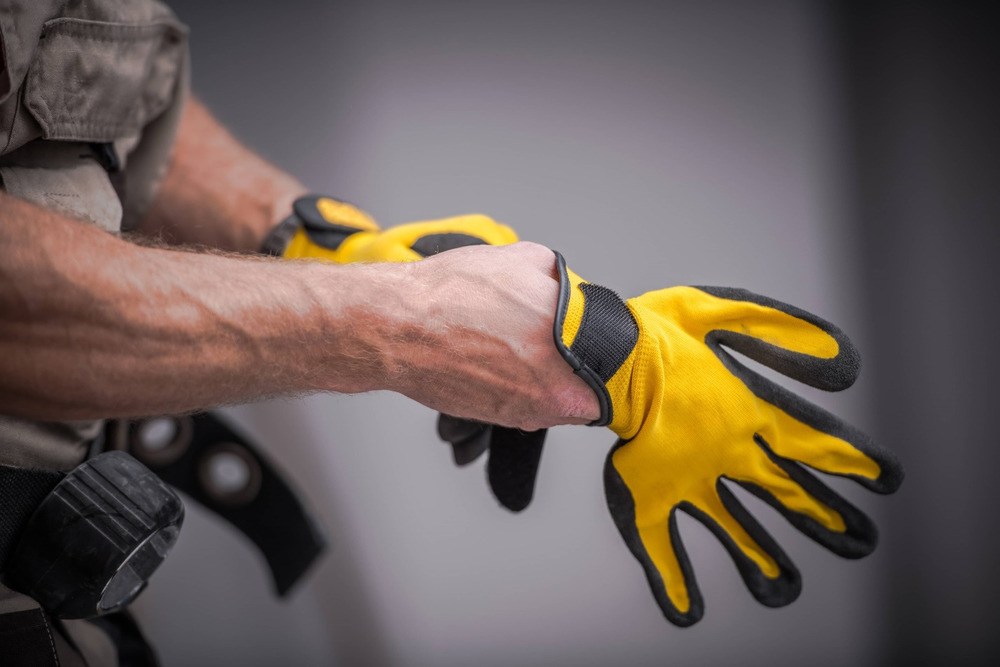The number one tool we often use to work is our hands; protecting them should be our prime concern. This is why hand safety gloves are one of the critical components of a PPE kit. It is not just wearing safety gloves but also choosing and wearing the right pair. Identifying the risk associated correctly and selecting the appropriate protective glove is essential.
Different risks associated with hand protection
Our hands are exposed to numerous hazards, including cuts, shocks, crushing, allergies, burns, tears, infections, and more. These risks can provide irreversible consequences on our health and the person handling them. This is why it becomes critical to identify the risk involved and to choose the safety glove that meets the appropriate European standard accordingly.
- Mechanical risk: Workers need to operate heavy machines or use various tools while working in industries. This can lead them to potential injuries, including blade cuts, abrasions, tears, punctures, etc. An unforeseen accident can cause significant injuries. This mechanical risk can be well regulated with European standard EN 388 protective gloves. For example, Black Mamba gloves are specially designed for various industrial applications and are suitable when standard disposable gloves may fail.
- Thermal risk: These threats are present in many professions, like welders, bakers, workers in foundries, or cold areas in the food industry. Extreme heat or cold can pose severe risks of burns and frostbite. Heat protective gloves are regulated by the EN 407 standard and evaluate the level of performance against various thermal risks, including contact heat, convective heat, and from molten metal splashes. Cold protective gloves comply with EN 511 and are known for their resistance to cold.
- Chemical risk: Biological, pharmaceutical, and healthcare industries are subject to chemical and infection risks. The consequences can be of various types, like skin irritation, allergies, infections, etc. Health gloves with an EN 374 marking can help limit these risks. Their resistance to penetration and their waterproof properties ensure maximum user protection. This standard also includes the biological risk of microorganisms, bacteria, and viruses. You can consider making your healthcare supplies from Unigloves, who have been preventing the spread of disease since 1989 and are amongst the world’s leading glove manufacturers.
- Electrical risk: Protection against electric shocks is critical. Safety gloves designed to adapt to the electrical hazard are regulated by EN 60903 and EN 16350 standards. These mandatory standards certify the essential requirement for PPE regarding electrical risk.
Material of the safety gloves
Some of the safety gloves materials most commonly used include:
-
Disposable
- Vinyl: These gloves are most suited for simple protection against material contamination.
- Polyethylene: It is a highly affordable material used in making safety gloves and is most effective for the food industry as they offer durability.
- Latex: This material is very comfortable to wear and is a popular choice for general-purpose gloves.
- Nitrile: Gloves made with this material are primarily used for chemical applications and provide enough sensitivity.
-
Reusable
- Knit: These gloves are made from fiber and other synthetic materials and are abrasion-resistant while offering moderate protection from heat and cold.
- Leather: Made from animal skins, these gloves provide reasonable protection against rough objects and moderate heat.
- Butyl rubber: This is a synthetic material and suited for places where there is excessive use of a variety of chemicals, including acids, strong bases, and ketones.
- Aluminized safety gloves: These gloves are specially designed for cases that involve heat, as the aluminum acts as a heat barrier protecting the users.
How to choose suitable safety gloves?
It is essential to understand that no single type of glove will provide you with protection against all safety hazards. You need to check with your jurisdiction for the regulations around hand protection while making indirect purchases in Europe.
Before making your purchases, identify all the hazards you may encounter, including chemicals, abrasions, temperature, and biological vulnerabilities. In addition, don’t forget to determine the amount of flexibility and touch sensitivity required. You need to define the type and thickness of the glove material, its length, and whether there is a requirement for line or unlined gloves or a textured glove to help you grip aid.







